Bon Appétit













Quarter Three 2023 • Volume 8, Number 3 Marjory Stoneman Douglas High School 5901 Pine Island Road Parkland, Florida 33076 @MSDEagleEye @HumansofMSD EagleEye.News @MSDEagleEye @MSDEagleEye @MSDEagleEyeNews Special Section Bon Appétit Cover News MSD in Brief New developments occur at MSD Drumming up Success MSD Eagle Regiment performs in the London New Year’s Day Parade 04 07 Feature Artificial Infiltration Presence of Artificial Intelligence in academics provides both benefits and detriments to students’ education 08
PHOTOS BY Kate Becker, Glory Lee and Rayne Welser
Opinion Ditch the Diet From Farm to Table Achieving Accessibility 28-29 The Great Resignation MSD varsity football team searches for coaches after five resign 30 Sports Table Hopping Fast Food Fight Trends: Tasty or Terrible? Tasting Trends Passion on the Plate Fueled Up Breakfast Made Better Caffeine Craze 11-27 Appétit Bon To read our complete set of policies and editorial procedures, please visit us at www.eagleeye.news The publication is a member of the Florida Scholastic Press Association, the National Scholastic Press Association, the Columbia Scholastic Press Association and the Southern Interscholastic Press Association. If you would like to advertise please call (754) 322-2150 or email MSDEagleEyeNews@gmail.com Editor-in-Chief Senior Section Editors Photo Editors Senior Photo Editor Julia Landy Kate Becker Reece Gary Ivy Lam Lily Singer Brynn Schwartz Glory Lee Carolina Ochoa Lozano Rayne Welser Publication Policies Section Editors Tatiana Ortiz Jessie Gesund Alison LaTorre Ryan Shimony Lyla Sachs Ashveen Saini Sofia Schorer Kaplan Sasha Lechtenstein Dana Masri Social Media Editors Eagle Eye News is an open forum for student expression created by Marjory Stoneman Douglas High School students. Eagle Eye News does not represent the views of Marjory Stoneman Douglas High School or Broward County Public Schools. Eagle Eye News seeks to recognize the individuals, events and ideas relevant to readers. Our organization is committed to fair reporting, providing a platform for student voices and equitable coverage. Staff Caitlyn Acosta Dhaanya Balaji Jasmine Bhogaita Grace Brill Lilly Citrin Vincent Ciullo Liliana Griffis Kevin Hamm Elyssa Harrison Anna Horowitz Andie Korenge Mariana Neri Sapori Madeline Newhof Nathalie Nguyen Advisor Melissa Falkowski
DESIGN BY Julia Landy
Bad Bathrooms
Dear Editor,
In school when people use the restroom, it always smells bad and is disgusting. There is always writing on the sides of the stalls with harsh messages. Most of the time, at least one of the toilets will be clogged with toilet paper or anything else students decide to flush down the toilet. Students will also choose to trash the bathrooms and leave their garbage behind. Schools should be taking better care of restrooms on school grounds. It is not fair for janitors to have to clean up the messes that students make. Although, schools are not allowed to set up cameras in bathrooms. This means that you cannot clearly identify who makes these messes when they happen, so schools cannot blame a single student. If schools tried harder to take better precautions in making sure their property is not being mistreated, then incidents like these will not happen.”
OLIVIA FRANCESCO, 9
Ditch the Vape
Dear Editor, There should be more regulations on vaping at school. When you go into the bathroom, often you are greeted with the haze of a foul smell or people standing around smoking their vapes. This is unacceptable. There are few security guards stationed around the bathrooms, especially at lunch. People can come and go to the bathroom freely to smoke their vapes without much interference. At the beginning of the year, it was noted that there are certain “zones” you can walk around in depending on what class you are in at the time. However, anyone who has taken a bathroom pass before knows that security guards do almost nothing to check your pass or send you back if you are walking in the wrong zone. Students can get up and leave to smoke in the bathrooms or hallways, and few teachers will even recognize they are gone. There needs to be more regulations on those leaving to go to the bathrooms, and guards near the bathrooms to make sure students are not vaping.
AVA THOMAS, 9
Climate Crisis
Dear Editor,
There are many issues that the world is dealing with right now, and one major one is climate change. Climate change has been affecting the globe for a long time and only worsens as time goes on. By 2100, it is predicted that global temperatures will have risen from 2.6 degrees Celsius to 4.8 degrees Celsius (borgenproject.org). More extreme weather, food and resource shortages and the spread of illnesses would result from this. The importance of going green should be emphasized, and greenhouse gases should be reduced. Making progress against climate change can be achieved through influencing government policies to cut carbon emissions and promote reforestation. Everyone must work together to make an effort at helping the environment by doing simple things such as eating more vegetables, reducing our carbon footprint and reaching out to our government to take action against climate change now.
NABEEHA
SHAIKH, 10
Editor to the
Burned Out
Dear Editor,
The school system has failed me. The curiosity that burned within me has been extinguished from the first day I have ever stepped foot in class. Elementary school has caused me to question my intelligence. Teachers were infuriated when they knew I wasn’t their typical student. Simple tasks such as arithmetic, writing and even spelling have always been difficult for me. Words have such an impact on students. As a
Wasted Potential
child, being called stupid and slow made me question if I would be able to advance in my academics. Elementary sent an expectation for how the rest of my academics should be. In Middle school, my teachers are teaching me comprehension, metaphors and literacy concepts. Yet, I still fail the FSA every year even after I constantly studied and grasped information, so why am I failing the school’s expectations if I am required to master their concepts.
ANA FERREIRA, 11
Filled to the Brim
Dear Editor,
Our school has about 300 more students than it has capacity for. Many of my classes are crowded, and that limits how students learn. In my Algebra 2 Honors class, there are more than 35 students, which makes me feel a lot like a number. In my Advanced Placement class, another 30 or so students are squeezed into the tight classroom, making it challenging to ask questions and participate in discussions. My friends who attend private school in Texas have 10-14 students per class. That is roughly 20 less students than in many of my Stoneman Douglas classes.
So what can be done? Construct another building? Change the boundary of the school to send more students elsewhere? These are all issues public officials are discussing. I just hope they move faster to make some decisions because my classes are fast and challenging, and I want to learn in a less crowded environment. I shouldn’t have to compete with others in my classes to get our teachers’ attention, and I shouldn’t have to sit so close to others while COVID is still with us. Let’s figure this out very soon, so more students don’t have to suffer.
JOSH FOOKSMAN, 10
Factory Farming
Dear Editor, Factory farming as a whole is very cruel to animals. Now, I don’t have a problem with people eating animals, but I do have a problem when the animal isn’t given a good life. With smaller farms, the animals have space to roam, interact with each other, and are given proper care; factory farms, however aren’t like that. In factories, the animals are confined to small cages barely bigger than their bodies. Chicken’s typical cages are only a few feet wide and are the height of the chicken itself; with pigs and cows, they don’t even have space to move. The animals also
Dear Editor,
face mutilation like debeaking and tail docking. The animal’s life spans are very short, laying hens live for 1.5 years while boiler chickens only live 1.5 months old, keeping in mind chickens can live up to 5-10 years. Pigs are killed before they are even a year old when they can live 15-20 years. With cows killed for meat around 2-3 years old, but with veal they are only a few months old and can live up to 15-20 years. I feel like we should care more about the animals providing us with food and give them a better and longer life before they are killed.
RIO RICE, 9
Anti AI
Of all the nonsense artists have had to endure this year thanks to tech-bros not having an ounce of creativity or respect for artists, AI “art” is the worst yet. AI art is the epitome of the abuse artists must suffer at the hands of creatively and morally bankrupt people who steal their labor to maximize profits. The vast majority of AI art is sourced from work stolen from artists in order to create a pale imitation of the passion and skill required to make an actual art piece. Most AI art seems to fall into one of two categories:
generic anime characters with conveniently cropped out hands or landscapes that look worse the longer you look at them. This art has no message, purpose, or passion behind it, and it only serves to discourage artists from sharing their works when they know that their already tenuous financial future is even more at stake when they know that at any moment their work can be stolen by “nftLuvr411” just so they can train their AI that still cannot draw hands to create as many generic anime people as possible.
ANDRES ORTIZ, 11
Have something to say about the school? Have something to say about a local, national or global issue?
Have something to say about this issue of the Eagle Eye? We want to hear your opinions.
Email
Dear Editor,
As we may know our schools are characterized for taking students special talents and taking them to their maximum potential, all staff belonging to the school have a responsibility with these special students and are sure to give them the resources necessary for their correct development. For this many professional athletes come from Florida’s schools. Even if it is great the support our sport district receives, for no one is a secret that the same treatment isn’t applied to other segments, for example dancing, music, culture, fashion, etc. Especially for music, the lack of support is evident; little to no classes offered being only to my knowledge guitar and AP music theory, zero information about different clubs unless you research thoroughly in the school’s online page, resulting in the only option for continuing a musical education through really expensive classes that not everyone can afford. Being Eagles, we should be given the opportunity to use our talents, but when the required resources aren’t offered it turns into a loss of human potential.
NICOLE PARRA, 11
Teacher Pay
Dear Editor,
Recently there was a rally to promote teachers’ pay and school funding in Tallahassee, after Gov. Ron DeSantis proposed boosting the minimum teacher pay to $47,500. His proposal would cost around $900 million, including the bonus program for educators. This cost concerns House speaker Jose Olivia but is seen as not enough for Florida teachers. I support teachers having higher pay, but also express concerns of an increase in taxes that would affect my parents as well. Issues like these cause people to decide whether the result outweighs the cost. Is there a good compromise or will teacher pay continue to cause controversy?
KAITLYN LARSON, 10
Uninhabitable
Dear Editor,
A state issue we are having in Florida is habitat fragmentation and urbanization. Habitat fragmentation is when animal’s habitats are cut up into boxes because of surrounding barriers built by humans, such as roads, highways and towns. This is also where urbanization comes in as a problem, because the more we urbanize natural land and wildlife, the more we destroy animal’s habitats and niches. For example, certain parts of the Everglades have roads connecting west Florida to east Florida; these roads are barriers of habitats and fragment them, moving animals into smaller areas than they once were in, or causing the animals to have to move to a larger area away from their native habitat. This can be dangerous for an animal, possibly introducing it to new predators and making it search for a new place to have its niche. Overall, habitat fragmentation in Florida is an issue especially because of the rich wildlife of the Everglades we have here, we need to protect this wildlife, not break it up into pieces.
REID KALVAITIS, 10
DESIGN BY Julia Landy 03 LETTERS TO THE EDITOR
submission to: MSDEagleEyeNews@gmail.com
be between
Submissions must
100-200 words
Us a Letter
Editor Letters Send
MSD
brief
for your information
MODEL UN COMPETITIONS.
The Model United Nations Club attended the GatorMun Conference in Gainesville, Florida on Jan. 21 and 22. The team included junior Sofia Schorer Kaplan, junior Maya Gordon, senior Saumil Amradkar, junior Aryan Singh, sophomore Dylan Shapiro, junior Serkan Aymaz, sophomore Sahil Sule, junior Ryan Rowe and freshman Ayaan Rajwany. Kaplan received a verbal commendation for her performance in the 2030: Mission to Mars Special Committee.
CAR WASH The Class of 2023 held a car wash on Saturday, Jan. 21, in the North Lot. The goal was to raise enough money to lower the cost of prom tickets, which will be released
in late February or early March. More than $1,000 was raised.
JROTC BLOOD DRIVE. JROTC hosted its second blood drive of the year on Thursday, Jan. 26. The blood drive was in partnership with OneBlood and was held in the senior lot. Overall, JROTC collected 79 pints of blood, including 17 palettes, setting a new record.
MEN’S BASKETBALL. The men’s varsity basketball team finished their season with a loss against the St. Thomas Aquinas Raiders on Wednesday, Feb. 1 by a score of 58-45. This was only the team’s sixth loss of the season, and they finished with a successful record of 17-6
RACCOON PROBLEMS A raccoon was spotted inside a vending machine on Jan 10. On Jan. 11, the raccoon was removed peacefully. This was one of many incidents that led students to complain about the vending machines this school year. The school is in the process of transitioning to another district-approved vending machine company.
WRESTLING TEAM. The wrestling team placed fourth in the BCAA County Championships. Six wrestlers earned podium placements individually. Sophomore Rocco Duygulu was the Eagles’ star wrestler for the tournament, winning first place in his bracket.
WOMEN’S SOCCER. The women’s varsity soccer team finished their season with a dominant 12-1-1 record, earning the Eagles No. 1 seed in the district playoff tournament for the second consecutive year. The Eagles will look to repeat their title as 7A District 13 Champions.
MEN’S SOCCER. The men’s varsity soccer team finished their season with a record of 10-2-3. The successful record earned the Eagles a No. 1 seed in the district playoffs, where they beat Coral Glades High School by a score of 3-0 and lost to Monarch High School 0-2.
the snail growstrail
Debate team and science department work together to ensure thriving aquatic life on campus
After debate coach and public speaking teacher Dr. Jacob Abraham accidentally acquired aquatic snails from plants he bought at a local fish store, which soon multiplied significantly, he had to find them a new home. To alleviate the growing snail population, he gifted some to the various tanks of teachers in the science department.

“The plants the fish store sold to me were contaminated; they were the home of snails we didn’t know were living there. I observed the snails were procreating in the tank, and there were more snails than fish. The snails were taking over,” Abraham said.
Abraham offered some of his snails to AP Environmental Science teacher Tammy Orilio, who had issues with algae growing on her goldfish tank.
“I get algae blooms because I’m a terrible fish mom, and I overfeed them, so the extra nutrients trigger an algae bloom,” Orilio said. “The extra algae grows on the walls of the tank, and I’d usually clean that with a brush, but the snails make it easier for me.”
Now, the goldfish have new friends, and the walls of the tank stay clean as the snails eat algae, dead plants, fish feces and leftover fish food.
Other teachers have taken snails for other motives, like growing the overall size of species in their tank or cleaning purposes as well.
Biology and botany teacher Branden Davis received a few snails. He also agreed that he and his students would culture copepods to feed the
saltwater fish in Abraham’s personal tank at his home. For learning purposes, some students, like senior Damian Francis, are helping Davis with this culturing process.
“With Mr. Davis, I am growing tiny, microscopic, barely visible crustaceans that feed on microalgae and sometimes each other. They act as a good food source for aquarium pets and will be used for Dr. Abraham’s tank,” Francis said.
Copepods are zooplankton that normally float through ocean columns feeding on phytoplankton and algae. Since they are only one millimeter in size, they don’t work in feeding all tank fish, but they are a popular food source for young and small fish, which makes them a perfect fit for the small fish of Abraham’s personal saltwater tank.
Abraham established the classroom tank this year with funding from Pet Supermarket, slowly
acquiring two sunburst platys named OneFish and Two-Fish, a julii cory catfish named Whatever and a red dwarf Mexican crawfish named Shrimpy Taquito IV. Sadly, One-Fish died after only a week.
As debate coach of the MSD Speech and Debate team, Abraham’s students spend lots of time in his room preparing for competitions and learning in class. Some of his students took a special interest in the tank and the team collectively refers to the aquatic life in the tank as their mascots’.

“I keep an eye on [the tank] and feed them every morning, students regularly change the water and do water quality tests,” Abraham said.
In Abraham’s debate classes, students earn grades based on a point system. Points are acquired in various ways which include activities like helping peers prepare for competition. This year, some students choose to earn their points by taking care of the tank and its residents, which is a way for students who can’t compete for personal reasons to stay involved with the team.
Junior Roni Lubarsky changes the tank water, moves the rocks, feeds the fish and shellfish, prepares the tank for school breaks and more. She started off doing this just for the class points; however, she and other students have grown attached to the sea creatures and care about looking after them.
“I have a love for these fish now,” Lubarsky said. “They are the debate team and classes’ mascots; I feel responsible for them.”
As Abraham’s snails continue to grow in size and numbers, he wants them to be shared with teachers on campus who would like them in their tanks as well. His goal is to continue to create a thriving aquatic life community throughout MSD.
 STORY BY Kate Becker
STORY BY Kate Becker
04 DESIGN BY Julia Landy FEATURE • News Briefs
in
New developments occur at MSD
REPORTING BY Kate Becker, Reece Gary and Brynn Schwartz
FLOURISHING FISH. Dozens of snails and Shrimpy, the red dwarf Mexican crawfish, feed on algae around Dr. Jacob Abraham’s tank. The aquatic life in the tank serve as a mascots for the MSD debate team, and students help care for the various fish and invertebrates in the tank.
PHOTOS BY Kate Becker
end of the road
BCPS Superintendent Vickie Cartwright and school board agree to a mutual separation
Members of the School Board of Broward County voted unanimously to negotiate a mutual separation with Superintendent Vickie Cartwright on Tuesday, Jan. 24, after an entire day of meeting with parents, activists, school staff and even administrators who questioned Cartwright’s ability to lead and support Broward County Public Schools.
Cartwright tried to convince the board of her effectiveness in dealing with the critical educational issues facing Broward and that she is fit to serve as superintendent despite allegations of political and financial dishonesty.

She stated that under her leadership, academic performance rates for all students have improved despite setbacks from the pandemic; Cartwright also argued that claims of her being ineffectual are wrong by citing increased spending on community activities and local businesses under her tenure, as well as on programs for students.
She assured the board that she has complied with all county and state regulations and procedures regarding the disclosure of information on finances, education and past careers during her selection process; Cartwright also denied that she violated Sunshine Laws, which regulate the behavior of government officials, by sharing sensitive information with
other school board members.
Cartwright’s contract with the SBBC began in February 2022, and the board later voted 5-4 to terminate it in November 2022 when member Daniel Foganholi, who was twice appointed by Gov. Ron DeSantis, raised a motion to discuss her performance and decide whether she had done an adequate job in her role.
She remained as superintendent since her contract required that she be given a 60-day notice of termination.
The board then voted 5-3 to rehire Cartwright on Tuesday, Dec. 13, 2022 after member Allen Zeman motioned to rescind the vote that initially fired her.
The criticism that surrounded Cartwright, which had been levied against her since October 2022, centered around a lack of support for underperforming students, a lack of a policies to address declining enrollment rates in Broward, a lack of a strategy for dealing with charter schools and school choice, a lack of plans for community engagement, and concerns over financial and political transparency.
The Broward Teachers Union and some school board members voiced concerns that the continued debate over whether Cartwright should keep her job or have her contract terminated is preventing the board from addressing important issues.
MSD’s Marjory’s Garden undergoes changes to hydroponics system and Everglades zone

blossoming botany
“The drama and uncertainty has been embarrassing. It has nothing to do with kids, teachers and staff and it has everything to do with politics and destabilizing this district, and it’s wrong,” school board member Sarah Leonardi said to reporters back in December.
The Jan. 24 meeting solidified Cartwright’s departure from BCPS; the board has started a nationwide search for a new superintendent, but
New additions were made to Marjory’s Garden this year. The biggest changes and improvements in the garden include a new wildflower garden, a revamped classroom, a new hydroponics tower, an expanded Everglades Zone and a footbridge. Additionally, many new plants and trees were planted to amplify the beauty of the area.
Located on the southwest corner of Marjory Stoneman Douglas High School, the idea of Marjory’s Garden came from astronomy teacher Kyle Jeter and chemistry teacher Sean Simpson in 2016. However, the garden officially opened in 2018 in honor of activist and conservationist Marjory Stoneman Douglas, the school’s namesake. To maintain its upkeep, the garden is open to student volunteers from various clubs.
“It takes a lot of people to make big changes in the garden, but every improvement starts from the idea of one person, which is what makes the garden such an amazing opportunity to grow,” Marjory’s Garden Club Co-president Jennifer Scheckowitz said.
The newly expanded Everglades Zone is a fundamental part of the garden run by TV Production teacher Eric Garner. It is supposed to represent native Florida flora and animals, such as the Swallowtail butterfly. The new addition takes inspiration from Stoneman Douglas herself and her book on the Everglades called “The Everglades: River of Grass.”
The brand new wildflower garden is another new spot added to attract native pollinators, like native butterflies, bees and moths, to the garden.

The newly improved water tanks more efficiently distribute water through the hydroponics system. Hydroponics is a selfsustaining system that uses fish feces from the catfish and bluegills in the garden fish pond to feed young saplings planted in water.
“There’s been a ton of new plantings that we’ve had out there for the last year, and everything is just getting bigger,” Garner said.
Every Sunday morning, members of
Marjory’s Garden Club work together to preserve the garden. Volunteers, faculty and other community walkers are also welcome to come out and maintain the garden.
“Every improvement we make is a product of hard work from our amazing staff members, volunteers and alumni that show up every Sunday,” Scheckowitz said.
There are still big hopes for the garden, even after all of the work that has been put in. One day, the club members hope to someday plant avocados, mangos, papayas, rows of corn and sunflowers. Another goal is to supply culinary with produce growing in the garden.
Marjory’s Garden will embrace new big features in the near future, like new aquaponics, a system that uses the waste of farmed fish that purifies the water and provides more nutrients to the plants. For now, student volunteers will continue preserving the current garden.
STORY BY Cypress Northcraft
INNOVATIVE ENVIRONMENT. Located at the front of Marjory’s Garden, the hydroponics tower and footbridge project are almost completed. The garden was named after activist Marjory Stoneman Douglas and showcases environmental conservation, something she had fought to protect.

BLOOMING COLORS. The newly planted wildflower garden is next to plants such as tomatoes and papayas. Marjory’s Garden showcases innovations and greenery students have been working on since 2018.
CLEANING UP. A wheelbarrow sits in the middle of the new food forest pathway in Marjory’s Garden. The project was built during Aug. 2022 and is located near the back of the garden.
05 DESIGN BY Grace Brill NEWS • Briefs
PHOTOS BY Anna Horowitz
SITTING DUCK. Broward Schools
Superintendent Vickie L. Cartwright attends the Broward School Board meeting on Tuesday, Dec. 13, 2022. The Board voted 5-3 Tuesday to rescind Cartwright’s Nov. 14 termination and give her until the end of January to improve.
PHOTO PERMISSION FROM Carl Juste/Tribune News Service
will be appointing an interim superintendent in the meantime.
STORY BY Kevin Hamm INNOVATIVE ENVIRONMENT
BLOOMING COLORS
CLEANING UP
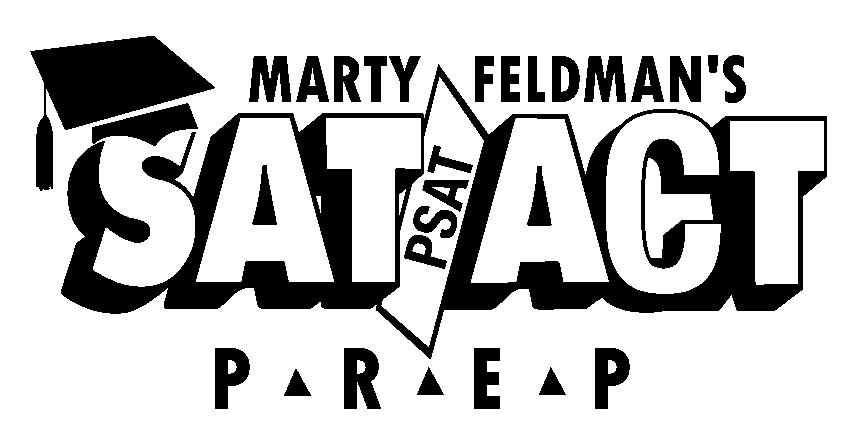





06 DESIGN BY Sofia Schorer Kaplan ADVERTISEMENTS www.martyfeldmansatprep.com email: Martyprep@aol.com 561-715-4006 954-346-9445 7472 Wiles Road Coral Springs, FL 33067 cell office Go EAGLES! Open: Monday-Friday 9 a.m.-7 p.m. Saturday-Sunday 10 a.m.-4 p.m. 5655 Coral Ridge Drive Coral Springs, Florida 33076 954.618.0350 APPLE INSURANCE AGENCY NOTARY PUBLIC · TAGS & TITLE SERVICE AUTO · COMMERCIAL · HEALTH · HOME MICHAEL WEDDERBURN General Lines Agent Tel: 954-318-0288 Fax: 954-318-0289 1861W. Oakland Park Blvd. Oakland Park, FL 33311
Drumming up

Success Success
The MSD Eagle Regiment kicked off the start of the new year by performing at the London New Year’s Day Parade on Jan. 1. The band prepared for the event all throughout the school year. Leading up to the parade, they spent eight days touring the city, experiencing British culture and visiting popular landmarks.


The trip was originally planned for 2021 by former band parent Franci Gargaro, but COVID-19 postponed the event twice before this year. Though some students graduated and missed the opportunity, newcomers were able to gain confidence and experience by performing in front of the large crowd.
Of the 205 people that went on the trip, 85 were regiment performers and 120 were guests, including family and friends of the performers. Principal Michelle Kefford accompanied the regiment as well.
To prepare for the trip, the Eagle Regiment held six, two-hour rehearsals, practicing for approximately 12 hours in total. Rehearsals occurred during competition season as well, so those that attended the trip participated in extra practices.
On Dec. 27, 2022, performers and family flew from Florida to London. After arriving, players were able to partake in activities and explore tourist attractions. Students went on tours around the city and toured Windsor Castle, exploring British landmarks. On New Year’s Eve, the regiment went on a boat tour and visited a science museum before celebrating with another band from Fleming Island.
“It was really awesome getting able to experience a new culture with all my friends and performing,” head drum major Kelley Taylor said. “Seeing everybody’s faces when we were performing was just an incredible experience.”
The morning of London’s New Year’s Day Parade, crowds lined up behind metal barricades to celebrate the new year and cheer on participants in the parade.
The event occurred for three hours during the day, starting at 1 p.m. for those in England and at 8 a.m. for those watching in America.
inflatable disco balls. Virtual audiences got a clear picture of the Eagle Regiment on Trafalgar Square near the end of the broadcast, where they briefly stopped to perform one of their most prominent songs of the season, “Dancing Queen” by ABBA.
“London was a lot of fun,” sophomore and bass drum player Kc Nikaj said. “It was fun getting to hang out with all my friends and the band in a different environment.”
Going to London was especially bittersweet for seniors in the band who were performing at
the highlights of my career,” Eagle Regiment Director Steve Rivero said. “A lot of people saying ‘thank you, thank you,’ the whole time, and it was just touching.”
Rivero has been working at MSD since the beginning of the 2019-2020 school year. Besides earning the band a state champion title for two years in a row, he is a favorite among students and parents. While hopes are high for a return to London and a potential invitation to the New Year’s Day parade in Rome, the band is currently focused on more timely events.
On Nov. 23, the Eagle Regiment will perform in New York City at the Macy’s Thanksgiving Day Parade. Macy’s revealed the news on April 18, 2022, inviting the whole band to attend and perform to represent Florida bands. The team will be one of 10 bands selected to join the recurring Macy’s Great American Marching Band and the NYPD Marching Band.
“Since it’s on the biggest stage in the world, we have to be great; so you know we’ll definitely be practicing more,” Rivero said.
There were 500,000 visitors and over 500 million television viewers watching the band march from Regent Street to Whitehall, according to the Evening Standard. Mixed in with the travelers and locals were loved ones from home who cheered them on through the march.
Flying colors and streamers fell from the sky as the MSD Eagle Regiment marched through the streets of London. Throughout the parade, performers from MSD played “Sweet Caroline” by Neil Diamond while the color guard flipped

their last big band event. While there still are some competitions and events later in the year, the parade was a milestone in their careers.
“I’m ready to leave high school, but I’m not ready to leave my family,” Taylor said. “It’s just really emotional, and I hope that I’ll still be connected to my alma mater somehow.”
The Eagle Regiment returned home on Tuesday, Jan. 3 with memories to share and performing experience under their belts.
“I thought that it was probably one of
Awards and accomplishments
October 2022
Eagle Regiment won first place at Flanagan High School in their first competition of the year. They also won fifth place at Bands of America in Orlando.
Nov. 5, 2022
Eagle Regiment won their last local show at Jupiter High School, becoming the grand champions.
Nov. 10-12, 2022
Eagle Regiment placed semi-finalist in Indianapolis at Bands of America Grand National.
Nov. 19, 2022
Eagle Regiment becomes the state champions at the Florida Marching Band Championship, achieving a top score in program history.
Dec. 27, 2022Jan. 3, 2023
Eagle Regiment performs in the London New Year’s Day parade.
The Eagle Regiment has already started preparing their routine, but will start rehearsing it the first week of November 2023. The trip runs for four days from Nov. 21 to Nov. 24; students will be able to enjoy the big city and perform in the largest parade in the world.
When millions of viewers tune in to the parade on Thanksgiving Day, the Eagle Regiment is planning to pull out all the stops to make their performance show-stopping.
STORY BY
April 12-16, 2023
Eagle Regiment Indoor Percussion and Color Guard plans to compete in Winter Guard International
Nov. 21-25, 2023
Eagle Regiment is set to go to New York City in the Macy’s Thanksgiving Day Parade.
07 NEWS • London New Year’s Day Parade DESIGN BY Brynn Schwartz
Eagle Regiment performs in the London New Year’s Day parade
Anna Horowitz
“
I thought it was probably one of the highlights of my career... doing that I think was one of the best things that Stoneman Douglas has ever done.”
Steve Rivero, Band Director
MARCH TO THE BEAT. The Eagle Regiment walks down Berkeley Street in London while playing “Sweet Caroline” by Neil Diamond. The team, made up of the MSD band and color guard, performed in the London New Year’s Day Parade. PHOTO PERMISSION FROM Michelle Kefford
ONE BY ONE. Eagle Regiment members prepare to march down Berkeley Street. The London New Year’s Day Parade ran throughout the city. PHOTO PERMISSION FROM Michelle Kefford
ALL IN THIS TOGETHER. The MSD band stands together for a group picture before performing in the parade.
PHOTO PERMISSION FROM Michelle Kefford.
Artificial
Artificial
Presence of artificial intelligence in academics provides both benefits and detriments to students’ education
Infiltration
Hours of work condensed into mere minutes, the student sweeps aside the writing outline given by the teacher in exchange for a computer. Entering the words “ChatGPT” into the search engine bar, the student smiles when the correct website pops up. Once the assigned prompt is typed into the platform, the essay writes itself. The job is done.
The evolution of artificial intelligence is ongoing, but recent developments have brought about its changing role in academic settings. AI is a term used to describe technology that mimics human intelligence and has primary functions that include problem-solving and learning.
A few examples of AI in everyday life include Face ID, ride-sharing apps and self-driving vehicles. Over the course of the past three years, AI has gone from being a potential asset to an impediment for educational institutions. This is particularly applicable when it comes to plagiarism, as the same software designed to detect it is now helping some students get away with it. In many MSD students’ opinions, AI is both helpful and harmful to their education.
AI in Use at School
Three of the largest AI-based programs used in relation to education are Grammarly, Turnitin and Photomath. A survey of 405 students at MSD revealed that 48% of students use Grammarly, 79% use Turnitin and 53% use Photomath.
Grammarly is a writing assistant that utilizes AI technology to proofread text and help improve various aspects of a written piece through punctuation, spelling and grammatical suggestions. Studies conducted by Grammarly found that their premium program helped 94% of the students using it improve their grades and 99% of students using it reported having increased confidence in their work.
“I’ve used Grammarly pretty much constantly throughout my schoolwork to enhance my writing since I tend to make pretty silly, simple, grammatical mistakes,” junior Isha Patel said. “I find it to be pretty advanced and almost always right, and it gives great suggestions and alternatives to whatever phrases I write.”
Similarly, Turnitin is an AI-centered plagiarism prevention service that promotes academic integrity
and checks work for originality, citation mistakes and inappropriate copying in order to discourage students from misconduct and aid teachers in the grading process.
“Turnitin can be a helpful tool for identifying plagiarism,” English teacher Lauren Rower said. “Knowing assignments must pass a plagiarism checker might deter students from actually plagiarizing.”
Photomath is an app that uses AI technology to scan and solve a variety of math problems. It can explain to students how to reach a solution via step-by-step instructions and tutorials, serving as a form of accessible and understandable online tutoring. However, some students view the app as harmful.
“I have never used Photomath to assist with my schoolwork because I don’t feel that it is necessary,” sophomore Lexi Linenberg said. “Photomath seems more educationally debilitating than other online calculators, and I’ve always feared that I would grow dependent on it.”
Most math teachers discourage students from using the app for a variety of reasons.
“It allows students to be lazier with their work and not actually master the skills well enough to perform well without the app,” Algebra 1 teacher Shannon Walsh said. “I would rather them come to me with questions and learn instead of searching for the answer and not actually understanding. The use of Photomath in my class is also considered cheating since it is not your original work.”
Changing AI Landscape
In June 2020, Generative Pre-trained Transformer 3, a language model that generates written text, was released by OpenAI. This development revolutionized the field of AI and surpassed all its predecessors in its ability to create content with a language structure.
In November 2022, ChatGPT, a chatbot based on GPT-3.5, launched. Another huge development in AI technology, it interacts in a conversational manner, using a dialogue format. The program has many implications for education. When prompted, it can write entire essays in a matter of seconds. Currently, it can evade plagiarism detection tools, like Turnitin.

In a study done by EduRef–an education-based data, trends and research service–in 2021, college professors blindly graded GPT-3 written academic essays, alongside

FEATURE • Artificial Intelligence 08
student written ones. They found that the software was able to achieve grades as high as a B.

The technology has only improved since, especially with the introduction of ChatGPT, which means that AI can easily write essays fit for a high school student that will not only be sufficient but obtain them high marks.
MSD teachers worry that despite the advantages AI provides when implemented into the school curriculum, it poses a threat when exploited by students.

“While AI may be helpful to kick-start a student’s thinking, I think it is ultimately hindering education and communication,” Rower said. “Students and individuals must communicate their thoughts, feelings, and perspectives in their own words. The inability to express oneself can negatively impact problem-solving skills and mental health.”
Teachers and students alike see the misuse of AI as something that will likely harm students in the future and pose long-term implications. Students voiced concern over the damage it could do to one’s ability to function appropriately in the workplace. Teachers, on the other hand, were more concerned with how it could lead to an individual’s lack of original thinking.
When it comes to preventative measures that can be taken to obstruct AI-based cheating, some teachers feel communication is key and that conveying the importance of upholding academic integrity and doing honest work is the best way for them to address it.
“I think that educators should communicate the importance of learning for the want of learning, not for a good grade,” Rower said.
Ethical Implications

The implementation of AI within academics is undeniable and so is its use by students, leaving people with differing opinions on whether it will prove to be more beneficial or harmful to their education. Many MSD students believe that while AI is a generally advantageous thing for students to use and have access to, there are specific instances in which its use is unacceptable.
Students believe that while using AI for reference or to guide them in their education is perfectly reasonable, using it to do work for them is crossing a line. They see how AI can be used as an asset and often take advantage of it on those occasions, but find it disagreeable when used to cheat or plagiarize.
According to the survey of MSD students, 89% have never used AI to complete an entire assignment for them, whether that be an essay or alternative piece of work. Additionally, 65% of MSD students believe that doing so is cheating, while 20% of MSD students are undecided on the subject. Meanwhile, 92% of MSD students reported that they have either never used or never heard of ChatGPT.
“I feel that the use of AI by students is unethical in terms of claiming work to be yours that was done by AI then copied,” sophomore Haylee Dorman said. “I feel that in some senses, when used to assist in understanding a topic it is okay, but feel that the use of AI in doing an assignment for you in order to do it quicker or do it better is unethical.”
Multiple students interviewed said they have never and would never consider using AI to write an essay or assignment for them because they value academic integrity and believe that if they chose to use AI to write for them, they would no longer feel confident in the work. They expressed that they would prefer to know that they were turning in work that authentically reflects their personality and abilities.
“I haven’t used AI to write an essay for me,” Dorman said. “When I complete an assignment, I value me putting in the effort and being able to credit that I did the work for the grade I got.”
The widely held belief of MSD students that using AI to write essays for them is plagiarism is consistent with the beliefs of both MSD faculty as well as academic institutions across the globe. Despite the fact that this has been ruled a form of academic misconduct, there is no way to prevent students from using it, and few plagiarism detectors can reliably discern when they do.
Schools must count on an honor system when it comes to this form of plagiarism. Plagiarism detection services, such as Turnitin will not or cannot dependably recognize AI written pieces, as plagiarized work, as it is original work, just not produced by the student turning it in. In the recent past, this did not create great concern due to the skill level at which AI was writing, but with the increasing number of developments in the field, it has begun to generate a large degree of alarm amongst educators.
In addition to measures that can be taken by educators, companies such as OpenAI can also make changes in an effort to prevent students from taking advantage of their programs. All text written by AI could be uploaded to an independent repository to allow for plagiarism detection. Age restrictions could also be implemented, as well as age verification systems to dissuade student use.
Even so, there is no way to guarantee that students will refrain from using AI wrongfully, nor is there a way to hinder its ever-increasing presence in education. Therefore, most have chosen to embrace AI and make use of what it has to offer, whether that be teachers using it to help them personalize lesson plans and grade quicker or students using it to receive an understandable explanation to a math problem.
STORY AND LAYOUT BY Andie Korenge GRAPHICS BY Liliana Griffis
09 FEATURE • Artificial Intelligence


10 DESIGN BY Dhaanya Balaji ADVERTISEMENTS Supporting students for over 35 years www.ScoreAtTheTop.com (954) 510-0600 CS@ScoreAtTheTop.com College Counseling Comprehensive or Hourly Improve your chances for admission to your top-choice colleges! More than 95% of our students are admitted to their top-choice colleges every year! • Insider tips about the college-admissions process • A well-balanced list of your “best fit” colleges • Expert curricular & extracurricular guidance • Essay review sessions to craft winning essays • Creation of an activity résumé that really pops • Preparation for effective college visits & interviews • Thorough review of all applications Hello@jraEC.com
Food is something that strikes a feeling in everyone. After a long, terrible day, one dish could be the reason you don’t feel so down anymore. Depending on how you are raised, those dishes could be deeply rooted in your family history, ethnicity and culture.



Others find joy in making food. Baking or cooking can serve as an escape for some people while feeding their passion to create something new.
Food serves as a medium for expression. While Pinterest used to be the main platform that chefs used to share their recipes online, apps like TikTok are quickly becoming a hot spot for new food ideas or classic dishes that we all know and love.




We don’t want to make this too complicated… everyone loves food. At MSD, students find comfort, inspiration and relish–don’t mind the pun–in food.
STORY BY Kate Becker
12
Table Hopping
MSD students find comfort in cultural foods
Fast Food Fight
364 MSD students choose favorite fast food restaurants in survey
Trends: Tasty or Terrible?
#FoodTok changes the way MSD students eat
19
21
Tasting Trends

MSD students influenced by #FoodTok trends, according to survey
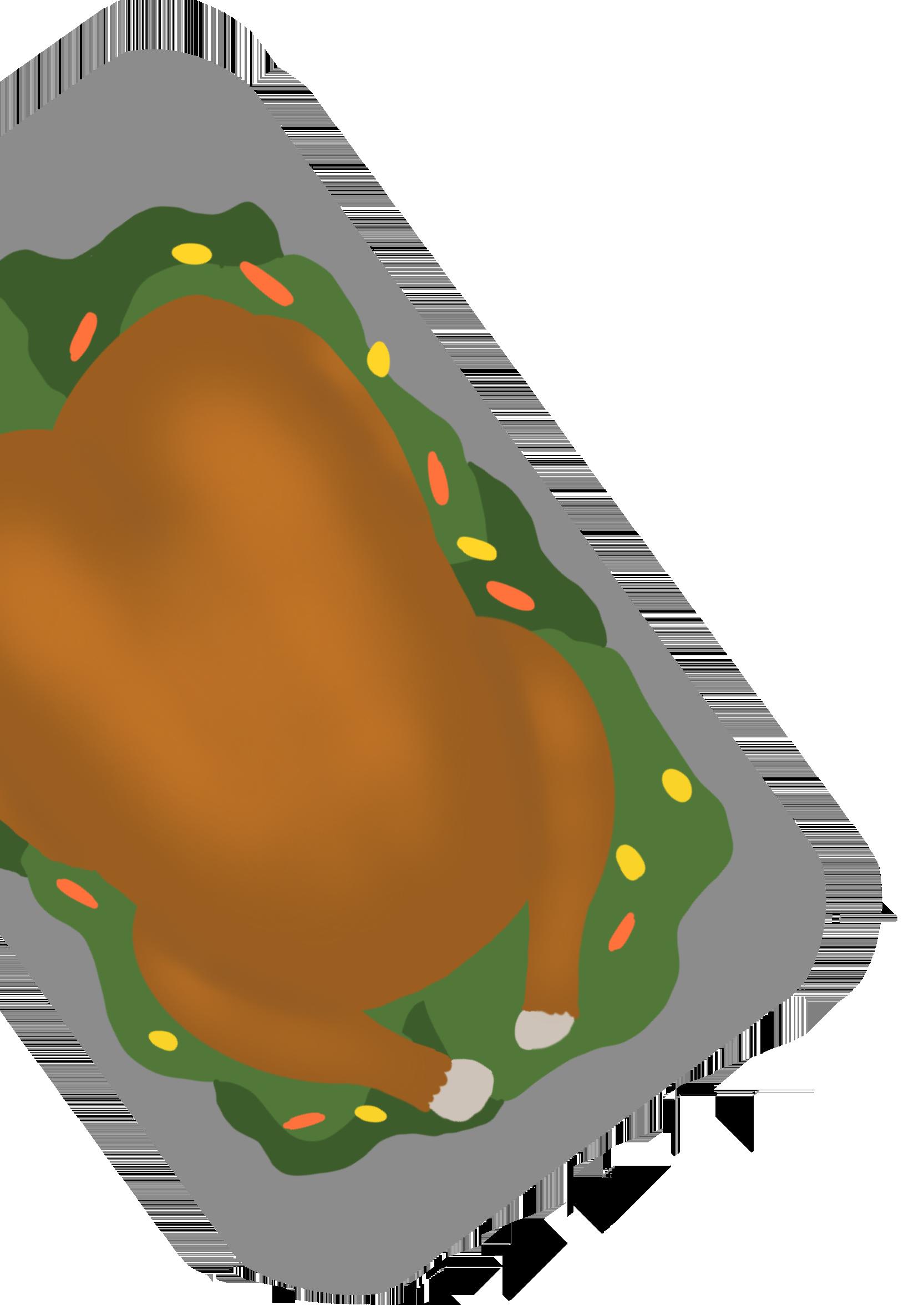


Passion on a Plate


Sophomore Charlotte James bakes as hobby
Fueled Up 22
17 15 28 27 25

Proper nutrition plays vital role in student athletes’ nutrition
Breakfast Made Better
Eating breakfast corresponds to better health for students

Caffeine Craze
MSD students follow global trend of rising caffeine intake

DESIGN BY Julia Landy
• Ditch the Diet • From Farm to Table • Achieving Access Opinion
11 SPECIAL SECTION DESIGN AND GRAPHICS BY Grace Brill
Table
Hopping Hopping
Cooking in the Caribbean
Bringing Families Together
Senior Isabella Ortega describes her comfort food, cachapas, as “scrumptious.” She could not have picked a more perfect word for these corn pancakes covered in melted cheese.
Corn is a large part of Latin American foods, dating back to pre-Columbian times. Cachapas are a traditional Latin American dish loved for their perfect combination of gooey cheese and sweet corn pancake.

Cachapas are made from cheese and corn, two traditional and delicious parts of Venezuelan culture. The dish made from maize flour dates back to when indigenous people made thick pancakes on a flat griddle. This meal is one enjoyed by generations of Venezuelans and many other Latin American cultures.
“I can remember getting a cachapa and thinking ‘Wow, this is the best thing I’ve ever eaten in my life,’” Ortega said.
Ortega’s mother is vegetarian, so cachapas allows her whole family to enjoy the meal together. This dish brings the family together and incites fun memories with loved ones.
Being a key part of her childhood, Ortega has nothing but wonderful memories associated with the meal. From traveling, to just enjoying them at home, cachapas are deeply embedded in Ortega’s life.
Spices and flour dust the countertops. Vegetables sizzle in the pan and the aroma of freshly cooked meat fills the kitchen. When combined, these ingredients form a Jamaican beef patty, a meal that fills both stomachs and hearts.
Jamaican beef patty is a staple comfort food found on nearly every street corner in Jamaica. Turmeric powder is added to a soft and flaky dough, which gives the patty its signature golden-yellow color. The dough is wrapped around pan-fried vegetables and meat, usually beef. Then, the savory pastry is baked in the oven until the meat is perfectly cooked and the outside is soft.
Freshman Joshua Brown has been eating Jamaican beef patties since he was a child and vividly remembers making them with his mother, while sharing the meal with his family.
“Before we can put the patty in the oven, there is about an hour of prepping,” Brown said. “My mom and I would talk and hang out in the kitchen while we waited, which was always fun.”
Brown enjoys cooking and baking in his free time. Whenever he makes Jamaican beef patties, it reminds him of his Jamaican roots and the way people of all ages gather to eat it.
“Jamaican beef patties are really a food that lets everyone come together and enjoy,” Brown said.
Jamaican beef patties are a classic Caribbean dish that brings many generations together to this day.
 JAMAICA COLUMBIA
JAMAICA COLUMBIA
PHOTOPERMISSION FROM TribuneNewsServices PHOTOPERMISSION FROMFreepik
MSD students find comfort in cultural food
12 SPECIAL SECTION • Comfort Foods
Hamantaschen that Feels like Home
Pinching the corners of the dough, securing a sturdy border around the flavored jam or chocolate filling, laying dozens of triangle shaped cookies on the baking sheet and enjoying a delicious treat. The delicate cookie, hamantaschen, is a comforting and delicious snack.

This delectable cookie is sophomore Sydney Moed’s comfort food. Moed first discovered hamantaschen when celebrating the Jewish holiday Purim. In Judaism, Purim represents a time in history when the Jewish people living in Persia survived a massacre with help from a woman named Esther. The hamantaschen symbolizes the three-sided hat worn by Haman,
the man who planned the massacre.
Making the hamantaschen is an all-day task and a family affair. As the whole family works together to fill the dough and lay out the cookies, the kitchen fills with the smell of delicious baked goods.
“I prefer chocolate, but my mom loves to fill hers with blueberry jam,” Moed said. “You can do whatever you want with it; it’s super fun to make.”
Hamantaschen reminds Moed of her memories of going to temple, dressing up for the holiday and enjoying the cookies. Comfort is definitely one word to describe how these baked goods make her feel.
Childhood Satay
Spices mix together to form a flavorful marinade. Skewered meat cooks on the grill. The entire family gathers around the table to enjoy a plate of satay.

Satay is an Indonesian dish of skewered meat, traditionally chicken, marinated and served in peanut and chili sauce. They can also be topped with shallots, a variety of onions.
Though the exact origins of the dish are unknown, the dish’s Middle Eastern influences allows it to be enjoyed by many different cultures.
Sophomore Adinda Firman has been eating satay her entire life and it soon became her comfort food. “I’ve been eating it since my childhood, so eating it again brings back comforting memories,” Firman said.
Satay is a classic and comforting dish enjoyed by many people all over the world. And for Firman, it is a piece of her culture that she cherishes. The feeling of childhood, comfort and warm memories is what Firman expects when enjoying this dish.
Stickin’ in the New Year
Welcoming the Chinese New Year with a delicious treat, families are brought together at the table for a taste of the sticky, sweet and gooey rice cake, nian gao.

Served on and around the Chinese New Year, nian gao is believed to have been created as an offering for the Kitchen God, who is said to have a presence in every household. At the end of the year, the Kitchen God gives a report to the Jade Emperor of all the bad deeds committed. To prevent the Kitchen God ratting on the household, people would offer him nian gao so his mouth would “stick” together.
The cake is made of glutinous rice flour and sugar which are then mixed to form thick batter. Then, they are either steamed or pan-fried until fully cooked.
Freshman Niki Yuan’s family prepares nian gao every year, and the delicacy quickly became a favorite dish of hers. To top off the dish, Yuan likes to add peanuts and jujube, a type of Chinese date.
“My mom always makes batches of nian gao to celebrate our holiday time,” Yuan said. “It’s a delicious sweet dessert that’s crunchy on the outside and soft on the inside.”
In Mandarin, the name nian gao means “higher year.” Eating the dish for Chinese New Year is said to bring good fortunes and prosperity to the new year. It also represents raising one’s self higher and taller for the year. The traditional dish holds a special place in the hearts of those celebrating the Chinese New Year.
ISRAEL
INDONESIA
CHINA
DESIGN BY Anna Horowitz and Julia Landy
PERMISSION FROMEnvatoElements PHOTOPERMISSION FROM EnvatoElements PHOTOPERMISSION FROM EnvatoElements
REPORTING
BY Lilly Citrin and
Jasmine
Bhogaita MAP GRAPHIC PERMISSION FROM Envato Elements PHOTO
SPECIAL SECTION • Comfort Foods 13



14 ADVERTISEMENTS Facing Foreclosure House Needs Repairs Behind on Payments Relocation Divorce/Bankruptcy House Vacant WE BUY HOUSES - DUPLEXES - APARTMENTS R R R R R R CONTACT US : MILLERSALESGROUP@LIVE.COM DESIGN BY Sofia Schorer Kaplan
fast food











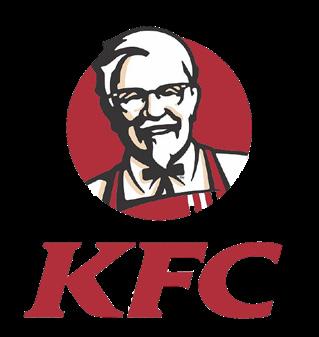
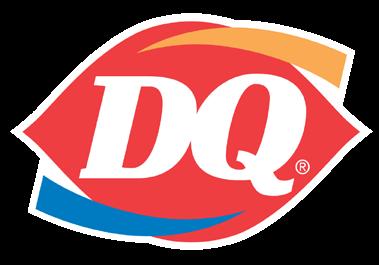


FIght



15 SPECIAL SECTION • Fast Food Favorites
Wendy’s burgers
taste
fresh, like home, unlike the preservative flavor alternatives,”
Victoria Zaharis, 11
McDonald’s has the saltiest, crispiest fries by far,”
86% 14% 48% 52% 52% 48% 29% 77% 23% 38% 62% 71% 69% 31% vs. vs. vs. vs. vs. vs. vs.
Ethan Leavy, 11
73% 27% vs. DESIGN AND REPORTING
364 MSD students choose favorite fast food restaurants in survey
BY Reece Gary and Kate Becker






16 FEATURE • Local Farms DESIGN BY Mariapaz Santacoloma A W A R D - W I N N I N G P O O L S & C U S T O M L I V I N G S P A C E S C A L L U S 9 5 4 - 7 5 5 - 4 4 0 2 ( U S E S M A R T P H O N E )
Trends: Trends: Trends:
#FOODTOK
Tasty or Terrible?
TikTok has changed the way people do their makeup, invest, thrift and read. The viral success of TikTok communities, like #BookTok, have rekindled young people’s love for reading and put previously unheard-of books on the New York Times bestseller list. Therefore, it’s no surprise that TikTok has also changed what people eat.
In a survey of 368 MSD students, 77% of them selected TikTok as a platform in which they view foodrelated content.
“People can add their own opinions [on TikTok], and you can see the food in a more realistic setting than on a cooking show,” junior Maddie Zelinka said.

For some, #FoodTok seems more authentic than other sources for watching food-related content. Food Network creates picture-perfect food in picture-perfect settings; however, on TikTok, anyone can go viral, meaning #FoodTok tends to show real ingredients, real recipes, real kitchens and real lives.
Part of the wild success of #RecipeTok and #FoodTok is that the videos are short, something many MSD students prefer, according to survey data. Rather than watching 50-minute YouTube videos that take viewers through step-by-step processes of a recipe, TikTok users can watch a 60-second video that summarizes the steps and shows the final product or watch a succinct, to-thepoint review on a restaurant or item.
While short in length, these videos can be large in impact. TikTok food influencer Keith Lee (@keith_lee125) aims to use his platform to help save local restaurants that are in danger of going out of business. Among one of the restaurants he reviewed was Frankensons Pizzeria in Las Vegas. The restaurant went from barely scraping by with the few customers they had to selling out after Lee’s review was posted on TikTok. The video currently has over 7 million likes.
TikTok also saved Nico’s Mexican Restaurant, Salt Lake City restaurant. Carlos Cardenas, the son of the owner, Nico Cardenas, posted a video about how his father was devastated that he may have to close his restaurant. It went viral with over 2.5 million likes and the next day, the number of customers surged.
“Food influencers are beneficial. With their help, you can access relevant recommendations of where or what to eat,” Zelinka said. “They are especially useful on trips because you don’t know the local restaurants.”
Numerous MSD students think #FoodTok and #RecipeTok expose people to foods they otherwise would not have been exposed to.
“[#FoodTok] gives us as the viewer a new idea that would make us think, ‘that’s cool, I want to do that,’” freshman RJ Meis said.
FoodTok changes the way MSD students eat
only upload shorter videos,” freshman Kaila Stephens said. “It may not be long enough for followers to understand everything they need to do as they cook.”
Not all MSD students enjoyed the recipes that TikTok suggests. Recipes can end up unsuccessful, whether it be that the recipe was over hyped, looked better than it tasted or was just an odd creation. Among peculiar recipes that went viral, some users attempted to make mashed potatoes out of potato chips, cakes in mugs or steak cooked in a toaster.
“[My mug cakes were] either raw or hard as a rock. I recommend buying it from a store instead of doing homemade,” sophomore Abby DaGrosa said.
DaGrosa attempted to make mug cakes homemade three times, but she was not the only one disappointed by viral TikTok recipes.
“It was not a good experience, I made cloud bread and it wasn’t very good,” freshman Blake Dellaira said. Additionally, FoodTok could have significant negative consequences. Diets and “clean eating” have spread across social media platforms, but several studies are concerned that these trends are unhealthy.
A study in the Public Library of Science Journal found that viral diets could contribute to eating disorders in youth, who are already at greater risk of developing eating disorders.
According to the study, “Nutrition-related content on TikTok is largely weight normative, and may contribute to disordered eating behaviors and body dissatisfaction in the young people that are TikTok’s predominant users.”
Of the students surveyr, 61% believe that TikTok diets have more negative effects than positive ones.
“I think they are harmful because you have no way of knowing if the people providing advice are medical professionals or being paid to compliment a brand’s diet products,” Zelinka said.
Another concern is that diets promoted by influencers may be the result of undisclosed sponsorships, which are illegal in the United States. However, this often goes unenforced; these sponsorships are most cited as an issue with #BeautyTok, where makeup or skincare influencers will promote products that brands send or pay them to praise. Influencers promoting viral diets may have been paid to promote the diet, and in actuality, the influencer may have may really have negative feelings about the diet or never even tried it.
FOODTOK. Westglades student Alyssa Landy looks up the recipe for the viral baked oats dessert on TikTok. #Bakedoats has garnered over 1.3 billion views on TikTok thus far.


MIXIN’ IT UP. Landy blends the apple baked oats mixture, while reviewing the recipe online. The short nature of TikTok videos makes them easy to follow and imitate in a short amount of time.
FINISHING TOUCHES. Landy pours the batter into a ramekin before putting it in the oven. After Landy scoops the batter, baked oats can be customized with any additions or toppings.
PHOTOS BY Julia Landy
Among the most popular recipes that MSD students were influenced to try because of social media are mug cakes, which 33% of students have tried, and cloud bread, which 16% of students have tried.
TikTok provides viewers quick and easy recipes. For example, most mug cake recipes take under 10 minutes to make. That said, some students prefer long form videos instead because they provide more in-depth, step-by-step directions.
“I prefer YouTube because you can upload long videos on there, unlike TikTok and Instagram, where you can
The TikTok clean eating trend includes vlogs concepts such as “what I eat in a day.” These usually promote green smoothies and salads, but they sometimes show much less food than the recommended amount of food, according to Harvard Health Publishing. Some viewers may change themselves to eat like the people they see, which can prompt them to reduce their food intake.
“Creators either are recommending very unhealthy foods and beverages or promoting diets that don’t work and give you low self-esteem because the people you see doing them have flat stomachs and clear faces,” sophomore Jayda Jean said.
TikTok has changed food for adolescents, including those at MSD. It is unclear what the future of TikTok is, but it has shaped food today in both positive and negative ways.
STORY BY Brynn Schwartz
17 DESIGN BY Julia Landy SPECIAL SECTION • Viral Food Trends
MIXIN’ IT UP
FINISHING TOUCHES
“
[#FoodTok] gives us as the viewer a new idea that would make us think, ‘that’s cool, I want to do that”
RJ Meis, 9









18 SPECIAL SECTION • Viral Food Trends DESIGN BY Dhaanya
EARN SCAN
Balaji A Special Invitation for You
MSD students influenced by #FoodTok trends, according to survey
Tasting
students have made mug cakes

9%
MSD students have made baked oats after seeing them on

Trends Trends Trends
10%
Have you tried a viral recipe after being influenced by TikTok?


Have you tried a viral diet after being influenced by TikTok?
What is your opinion on viral TikTok diets?
16 38 63
62% of MSD students use TikTok to view, watch or read food-related content

19% of MSD students use Snapchat to view, watch or read food-related content

* Results based on survey of 368 MSD Students
48% of MSD students use Instagram to view, watch or read food-related content

17% of MSD students use Pinterest to view, watch or read foodrelated content

DESIGN BY Anna Horowitz REPORTING BY Brynn Schwartz SPECIAL SECTION • Viral Food Trends 19
16% 84% 62% 38% Negative No Yes Positive 63% Yes 37% No
of MSD
after
TikTok
of
16% TikTok
seeing them on
of MSD students have made pasta chips after seeing them on TikTok of MSD students have made cloud bread after seeing it on TikTok
PHOTO BY Julia Landy
PHOTOS PERMISSION FROM Envato Elements
PHOTO
COURTESY OF Tribune News Services
33%

20 ADVERTISEMENTS DESIGN BY Grace Brill *Money-Back Guarantee is valid for 5 days or 250 miles, whichever comes first. Subject to certain terms and conditions. See store for details. Some restrictions apply. AutoNation makes buying a pre-owned vehicle easy with one low price. No hassles. No haggling. You also get a Money-Back Guarantee* and more.
WHIPPING UP A STORM. Sophomore Charlotte James uses a mixer to combine wet and dry ingredients to make a strawberry shortcake. James’ time in the kitchen has brought her many new recipes and styles of baking from her childhood to now.


SLICE AND DICE. Sophomore Charlotte James cuts strawberries for her strawberry shortcake.
POISED PREPARATION. James carefully places the small cake on a pedestal. TASTE TEST. James takes a bite of her creation fresh out of the oven.
FOOD FOR THE FAMILY. James’ younger siblings Ian and Maggie enjoy the treat their sister made

Passion Plate
Sophomore Charlotte James bakes as hobby
On marble countertops, pots and pans clatter and bang. Appliances beep and whir while a fresh, sweet scent fills the air. They are familiar sensations for Charlotte James, a sophomore at Marjory Stoneman Douglas High School, who is constantly in the kitchen creating a multitude of treats to enjoy.


For as long as James could remember, she has been passionate about making foods from different cuisines. Subsequently, she has turned the activity into a frequent pastime that she finds rewarding and takes pride in.
“I come from a family where food has always been central, so I have been cooking from a very young age,” James said.
James’ family background in the kitchen contributes to her skill; she has never taken any formal or educational cooking classes.
“I have two aunts who really love to bake, so when I lived closer to them, I would often go over to their houses and learn a new recipe,” James said.
James has been whipping up delicacies since before she can remember. Vegetable tian is the first dish she remembers making from her childhood, which is a summer favorite made of layered caramelized onions, tomatoes, zucchini and sweet potatoes served over pasta. Another meal she enjoys making is ricotta ravioli, topped with herbs from her home garden.
Not only does James like to prepare meals, but she enjoys baking confections as well. Her first baking project was a New Year’s themed cake, which she and her neighbor made during the summer.
James likes having a few goodies to choose from when she just wants something small to munch on.
“I really love to make desserts I can throw in
on a
Plate
the freezer and then eat whenever I want,” James said. “I generally have a batch of cream scones and two or three different types of cookies in the freezer for a quick treat.”
James continues to gather and test different recipes from multiple sources. She has a preference for using cookbooks and the internet to research new techniques.
“I like cookbooks because they tend to be more to the point,” James said. “However, websites have much more variety and don’t require a purchase, so they are a great option.”
James sees baking as calming and relaxing, a primary reason why she envisions herself baking recreationally for the rest of her life. Though James enjoys her own creations, she also likes to hand out some to friends at MSD.
“Baking is very repetitive and generally allows me to just zone out which is very therapeutic,” James said. “Every once in a while I will bring a bag of chocolate chip cookies
to school and give them out to people who want them. I’ve never met anybody whose day couldn’t be made better by a chocolate chip cookie.”
James hopes to spread her love of baking with friends and family as much as possible. She believes her passion is one that others should adopt as well.
“The bottom line is that baked goods are delicious, and everybody should be able to know how to make them,” James said.
No matter what, James will always have a spot in her heart reserved for baking. The activity has become one she puts careful thought into, filling her plates with the warmth of both her food and her utmost dedication. Whether finding new recipes to prepare or fixing up a dish triedand-true, she aspires to bring smiles to the people that she shares her creations in the kitchen with.
STORY BY Vincent Ciullo PHOTOS BY Brynn Schwartz
DESIGN BY Vincent Ciullo SPECIAL SECTION • Student Baker 21
SLICE AND DICE
POISED PREPARATION TASTE TEST
FOOD FOR THE FAMILY
WHIPPING UP A STORM
Fueled UP
She sprinted toward the finish line, legs sore from a challenging run, victory was in her sight. Watching the crowd pass by, she felt like she was soon to be the victor, but then fatigue hit. Watching someone else break the ribbon as her own foot followed just seconds behind, the athlete is left wondering where she went wrong.
One may think that athletic success is determined predominantly by a high sense of motivation, a consistent training schedule or a good coach. While all of these are key components of good athletics, the importance of having satisfactory nutrition is oftentimes both overlooked and underestimated when looking at success. A recent survey of MSD athletes indicated that 56% of student athletes do not pay attention to the nutritional breakdown of their foods.
Without proper nutrition, an athlete’s body is unable to provide energy to the muscles and organs that allow for functionality. As a result of not being nutritionally equipped to maintain their energy level, their athletic performance will suffer regardless of how much they train.
When examining the nutritional needs of a specific athlete, there are multiple factors to take into account, including how long their energy lasts throughout an athletic event and how well they recover from exercise.
Sports nutritionist and functional dietitian, Barbara Lewin, is an expert on this very subject. For over 30 years, she has worked with high school athletes as well as professional athletes
and Olympic contenders to enhance their energy and improve their health.
“I have a lot of clients who are still growing. If they are still going through a growth spurt and they are also training for whatever sport, now you need energy to grow, but you also need energy for your sport, so it is very important to make sure they are getting the right nutrition, and most of the time they are not, and that’s a huge issue,” Lewin said.
nutritional breakdown of their foods. Regardless of activity level, every person requires a wide array of nutrients in order for their body to perform basic functions and maintain energy. High schoolers, especially, tend to require higher calorie counts than adults due to the growth that their bodies undergo as teenagers. When physical activity is added to the equation, the caloric needs of teenagers expand.
body healthy, but it also provides the body’s main source of energy. Nutrients are divided into two main categories: micronutrients and macronutrients. Micronutrients are the vitamins and minerals that bodies need small amounts of in order to function. From helping the body fight infection to keeping nerves healthy, vitamins serve a vast array of purposes.
Macronutrients, on the other hand, are what comprise most of one’s diet. Macronutrients include carbohydrates, proteins and fats. Proteins are mainly used by the body to aid growth. They are critical in repairing muscle tissue, making them pivotal for athletes. Fats are required to allow the body to absorb vitamins A, D and E, which are known as “fat-soluble vitamins,” meaning that they only dissolve in fat, and thus can only be absorbed and used alongside fat.
Sports Dietitian Kyndall Herman recommends that student-athletes get between 25% to 30% of their daily calories from healthy fats, 45% to 65% from carbohydrates and consume 1.2-2.0 grams of protein, per kilogram of body weight, per day.
According to Lewin, the way in which an athlete recovers from a workout is a good indicator of their general nutritional health. A survey of 85 athletes at MSD reveals that only 33% of student athletes who reported they recover poorly from exercise also pay attention to the nutritional breakdown of the foods they consume. On the other hand, nearly 46% of those student athletes who reported they often or always recover well pay attention to the
According to the National Heart, Lung and Blood Institute, an inactive, teenage boy requires around 2,000 to 2,400 calories per day, while a male student athlete could require anywhere from 2,800 to 4,000 calories per day. The same is true for adolescent girls; those who are inactive require approximately 1,800 calories a day, while female student-athletes require about 2,400 to 3,000. Not only does nutrition aid in keeping the
For athletes especially, carbohydrates are highly essential. Foods including pasta, rice, crackers and bread are high in carbohydrates. The body converts carbohydrates into glucose, which is the only form of energy that muscles can use directly. Muscles store glucose from the blood in the form of glycogen, which generally lasts anywhere from 90 to 120 minutes. In addition to providing muscles with energy, carbohydrates also digest quickly, making them
Survey of 85 MSD student athletes reveals nutritional habits of those who say they recover well from exercise
61% of MSD athletes who report recovering well from exercise typically eat foods high in carbohydrates and protein before a workout, such as turkey sandwiches, almond butter with crackers and protein bars
37% of MSD athletes who report recovering well from exercise typically eat foods high in carbohydrates before a workout, such as pasta, bread and crackers
SPECIAL SECTION • Athlete Nutrition
Food is your best source of your nutrition. It is where you are getting your vitamins and your minerals. Supplements are just that, they should be supplemented in the diet if necessary at all.”
Barbara Lewin, Sports Nutritionist and Functional Dietitian
“ macro details
22
Proper nutrition plays vital role in student athletes’ performance
further recommended for athletes.
Alternatively, fats and fibers take far longer to digest, which makes it so the body consumes energy while digesting them, rather than giving the individual an immediate excess of energy for game play. Eating foods high in fat and fiber directly before a game can make an athlete feel sluggish or experience cramping during the game. Similarly, ingesting protein requires the body to convert it to carbohydrates in order to provide the muscles with energy in the form of glucose, in a process called gluconeogenesis, which also takes energy from the body. Herman recommends that athletes consume an extra serving of carbohydrates both the night before and the day of athletic competitions in order to ensure their best performance.

“To improve performance, athletes should aim to have a balanced meal three to four hours before competition. Focus on a combination of foods high in carbs and moderate in protein,” Herman said. “Limit foods high in fat and fiberthese will tend to make you feel ‘sluggish’ or cause stomach cramping. Examples include fried chicken–high in fat–or salads–too much fiber.”
In order to ensure ample time for digestion, it is sometimes best not to eat directly before a game, but rather to wait a couple of hours. The majority of MSD student athletes, 67%, reported consuming their pregame meal one to two hours before their sports game, while 17% reported eating with 30 or fewer minutes left before the game. Only about 14% of student athletes at MSD reported that they eat their pregame meal within the proper three to fourhour time frame before their game.
Another critical nutrient for athletes is iron. Iron assists the blood in transporting oxygen from the lungs to the rest of the body. When athletes are low on iron, they get winded faster than those who have consumed the necessary amount, which for boys tends to be 11 milligrams per day, and for girls is closer to 15 milligrams per day. About 83% of male athletes and about 89% of female athletes at MSD report having no idea how much iron they consume each day.
While a high carbohydrate and adequate iron consumption are necessary for nearly all athletes, the exact ratios of different nutrients and quantities of daily calories are difficult for experts to standardize, as nutritional requirements are unique for each individual.

Dietitians and nutritionists are able to examine individual athletes and determine the precise nutritional requirements of their bodies.
“The best nutrition plan is one that’s individualized, realistic and fits their lifestyle…we come up with a very individualized plan that is not going to work for everyone, but it’ll work for that athlete that I am working with, so it is like their secret weapon,” Lewin said.
About 21% of student-athletes at MSD consult a nutritionist either occasionally or often. From the understanding of their own personal needs, athletes are better equipped to give their best performance.
“How you eat during the week, before your game and how you train during the week [influences performance most],” freshman soccer player Anthony Carnuccio said. “Probably once a month, I go over my diet. I wanted to go full-in on soccer and do my best… I feel like I’m faster.”
MSD athletes who understand the value of nutrition, either from their nutritionist or their own research, tend to establish their own dietary routines which they follow leading up to a sports game.
“If I am low on carbs, then that means I am low on energy, and that means I won’t perform as well,” sophomore football player and wrestler Oshri Gur said. “I wake up, probably make two eggs, eat them, then come to school and eat lunch. Normally I pack some chicken or salmon with some rice and eat that. Then I go, and we have our pregame meal for football. Then I chill for an hour or two in the locker room, and we go and we play.”
According to Lewin, another frequent problem faced by athletes is managing their diet during their off season. Since the majority of sports do not run year-round, athletes who only engage in high levels of physical activity during their season need to make adjustments to their diet when they are inactive. Despite this, 51.8% of MSD students report making no change to their diet when their sport is not in season. Lewin reports having seen many cases of athletes becoming out of shape during off seasons because they continue to consume the same number of calories that they are used to while using fewer due to a decreased activity level. Herman
recommendation, athletes decrease their carbohydrate increase from half of their plate during game season, to one-third of their plate during the off season.
“With the grind of the season behind you, the off season is the perfect time to focus on your eating habits and make changes to your body composition, if this is a goal of yours,” Herman said. “You can do this by picking a couple habits you’d like to improve during this time—for example, focus on drinking more water, eating breakfast daily or limiting fast food. It is important that you rest, recover and enjoy the downtime, while also allowing yourself some flexibility with your eating,but remember to always keep your offseason training goals in mind.”
According to health experts, nutrition is one of the most influential components of being successful in athleticism. By ensuring that their intake of each nutrient is sufficient for fulfilling their body’s individual needs, student-athletes are able to perform better during games, recover faster after exercise and reduce athletic hindrances such as fatigue. When nutrition is prioritized at the same level that physical training and practice are, sports nutritionists find that athletic performance only improves.
STORY BY Julia Landy

15% of MSD athletes who report recovering well from exercise do not pay attention to what they eat before a workout
9% of MSD athletes who report recovering well from exercise typically eat foods high in fiber before a workout, such as vegetables and salads
2% of MSD athletes who report recovering well from exercise typically eat foods high in carbohydrates, protein and fat before a workout, such as hamburgers and fried foods
SPECIAL SECTION • Athlete Nutrition DESIGN AND GRAPHICS BY Julia Landy
23

24 ADVERTISEMENTS DESIGN BY Sofia Schorer Kaplan
Better Breakfast made
Eating breakfast corresponds to better health for students
Most people have heard the phrase: “breakfast is the most important meal of the day,” but is that true? According to nutrition researcher Ana López-Sobaler, a healthy breakfast is associated with “better body weight control and healthy cardiometabolic risk indicators.” Skipping breakfast has been linked to weight gain and obesity because it can lead to overeating later in the day.
Studies also suggest that a healthy breakfast is related to improved cognitive functions, such as memory and concentration, particularly in children and teenagers. Increased energy levels are another benefit of eating a healthy breakfast, as it gives the body the energy needed to start the day. It has even been linked to lower levels of stress and anxiety.
STORY BY Caitlyn Acosta and Gabie Soivilus
Egg on Avocado Toast
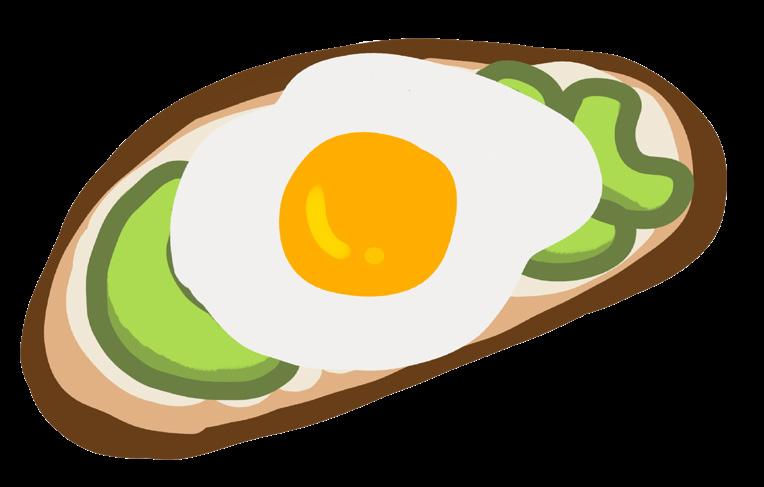
• Balances Cholesterol
• Heart-Healthy
• Has good sources of protein and natural fat
• Whole grains reduce the risk of diabetes
Parfait (granola, oats, and Greek yogurt)
• Promotes brain health
Provides your body with nutrients and Has natural sugars, fiber, healthy fats, and is
I think [eating breakfast] improves my performance at school because I won’t be thinking of eating, and I’ll have more energy to focus during class.”
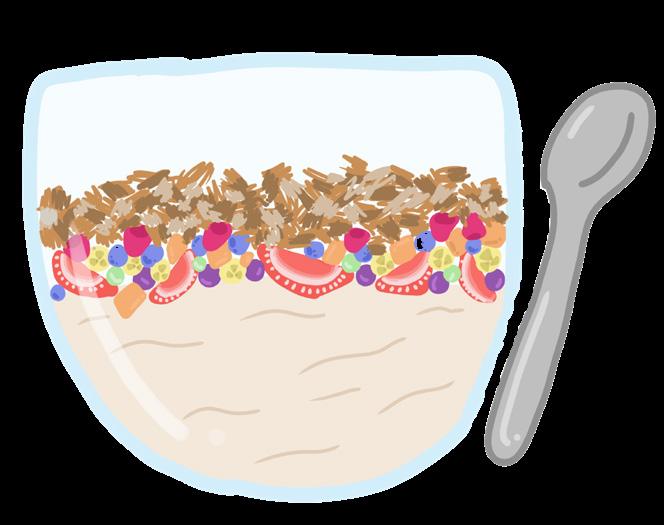

Spencer Blake, 10


I think it is important to eat breakfast to sustain your body throughout the day. Your brain needs calories to work. I think eating breakfast helps me stay focused and happy throughout the day.”
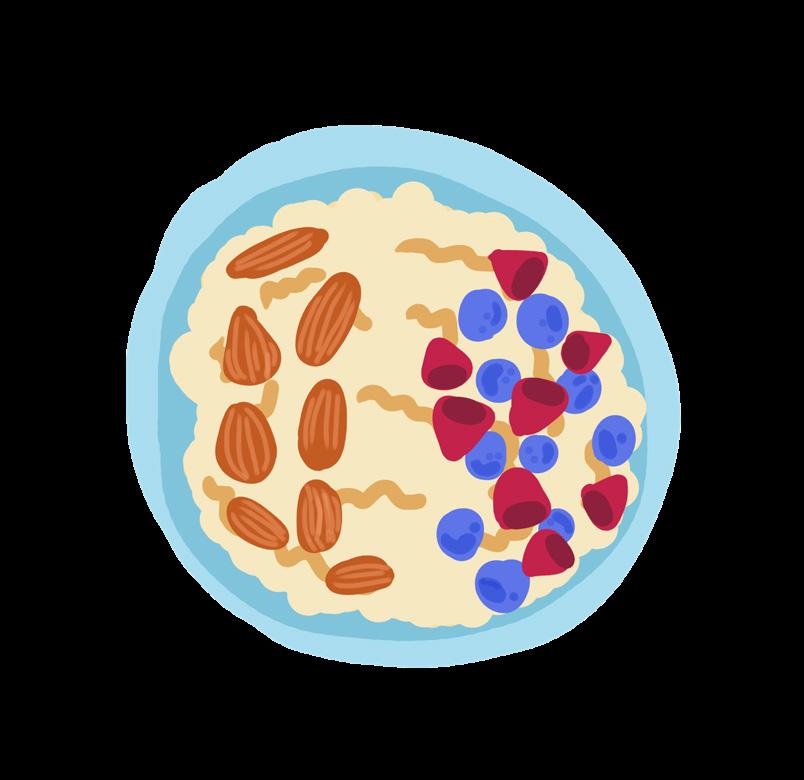

Eliani Carr-Betts, 9

Oatmeal with nuts and berries
• Lowers blood sugar levels and balances cholesterol
• Can protect your skin against irritation
• It is also very filling and is filled with vitamins

• Has a good source of healthy carbohydrates and fiber
certified via the International Sports Science Association. Black urges students to keep a few things in mind when eating in the morning.
“It’s important to listen to your body and find a meal pattern that works for you, rather than sticking to a rigid schedule,” Black said. “Everyone’s body is different so it is important to keep in mind your personal dietary restrictions, allergies, needs and preferences when choosing something to eat. Some people may not feel hungry in the morning and that is OK. Listening to your body is important, and it is best to find a meal pattern that works right for you. Portion sizes are also something to keep in mind, not everyone needs a big breakfast, so be cautious of overeating. Finding the portion that is right for you
that makes you feel energized and ready for the day is key so that you do not eat more than you need. Many people may not find the time in the morning to cook something from scratch, so instead, you could prepare something beforehand or find something quick and healthy to take on the go.”
Nellie Black Sports Nutritionist

DESIGN BY Gabie Soivilus SPECIAL SECTION • Breakfast 25
Nick Colella, 12
“
It’s very clear that when I don’t eat breakfast; I feel hungry and terrible. Not being hungry and having a full stomach is a great way to start the day allowing me to feel more awake and ready.”
“
“


26 DESIGN BY Sofia Schorer Kaplan
We provide innovative legal solutions to your problems.
Results are only successful when we make a difference in your life.
We are Your Legal Partners 4 Duke Street, Kingston, Jamaica WT +1 (876) 967-0676 TWPAttorneys.com ADVERTISEMENTS
We’ll help you to protect your interest
MSD students follow global trend of rising caffeine intake
Results are based on a survey of 423 MSD students
Caffeine is a heavily consumed substance that is easily accessible. It can be found in popular beverages like coffee, but is naturally occurring in more than 60 plants such as tea leaves, cacao pods and kola nuts which are found in soft drinks and sodas. Synthesized caffeine has also been fabricated to be an energy additive to many common goods like medicines, gums and foods.
The rise in caffeine consumption can be directly influenced by a constant change in social trends. The popularity of lattes, cappuccinos, frappes and shops like Starbucks and Dunkin’ Donuts all have led to increased caffeine consumption in a multitude of forms.
STORY BY Alison LaTorre and Sofia Schorer Kaplan
Craze Craze your cup?
100mg “
I consume, on average, one caffeinated beverage per day, whether it is an energy drink or an iced coffee. I have experienced a multitude of symptoms–some positive and some negative.”

Maya Gordon, 11
“
I don’t have caffeine that often, but when I do, it’s in coffee. I experience jitteriness, sometimes a stomach ache and have a sudden rush of energy to immediately do something.”
Amanda Pugatch, 10
“
I think some [teachers] need to be more cautious about who they let consume coffee, because there are definitely some students who should not be consuming coffee during school hours.”
Dr. Jacob Abraham
Addiction
18% of MSD students consider their caffeine consumption an addiction
27 SPECIAL SECTION • Caffeine Consumption
Energy Booster Rapid Heart Rate Increased Alertness Intestinal Discomfort Negative Side Effects matcha tea green tea 28 mg 12 ounce can of Coke 34 mg black tea 47 mg 70 mg brewed coffee 95 mg 12 ounce can of Red Bull 114 mg various pre-workout drinks 150 to 300 mg what’s in Chart displays milligrams of caffeine in 8 ounce serving of beverages, unless otherwise specified Positive Side Effects Increased Productivity Rising Blood Pressure 51% of MSD students consume coffee as one of their main sources of caffeine 43% of MSD students consume soda as one of their main sources of caffeine 28% of MSD students consume tea as one of their main sources of caffeine 32% of MSD students consume energy drinks as one of their main sources of caffeine
DESIGN BY Alison LaTorre, Sofia Schorer Kaplan, Julia Landy GRAPHICS BY Julia Landy
Caffeine
38% of MSD students think caffeine consumption impacts their performance and/or focus in school The American Academy of Pediatrics recommends that teens consume no more than of caffeine per day
Ditch the

Obsession with diets and dieting trends leads to variety of problems
Diet Diet
It is the start of a new week, which means the start of a new diet - a plan to redirect eating habits and finally fit into that pair of jeans that have been sitting in the closet with the tags still on. This week’s diet is different and more restrictive than the previous ones. No carbs or added sugars are allowed and no dairy or meat either. The keto diet was last week, but that did not seem to be working out.
While dieting is not necessarily a bad thing, it can become dangerous when individuals begin to devote all of their time to thinking about their diet, causing them to be unable to live in moderation. It becomes an obsessive and miserable aspect of people’s lives that they may not be fully aware of. Diet obsession can lead to disordered eating, which is harmful to both the body and mind, and cause disastrous short and long term implications.
Over the past century, a variety of new diets have arisen and gained popularity from their supposed benefits. The internet has become a place where people share their crazy, obsessive diets with the world and influence others to follow along. One diet that has become common is the ketogenic diet, referred to as keto, which is a low-carb, high-fat diet. This includes eating more cheese, butter and other unsaturated fats. Grains, starchy vegetables and high-sugar fruits are just some of the food items that are not permitted in the diet.
With keto, however, eating too much protein can interfere with ketosis, which, according to Cleveland Medical Clinic, is a metabolic state that occurs when your body burns fat for energy instead of glucose from carbohydrates. The keto diet, originally created as a treatment for epilepsy in the 1920s, has been taken out of proportion by diet obsessed individuals who want to lose weight quickly.
Eating protein is shown to be beneficial to the body, as it builds strength in muscles and bones, builds and repairs tissue and regulates hormones. According to Piedmont, a healthcare organization, when an individual reduces their protein intake for the sake of the keto diet, they are only hurting their bodies, especially in
adolescents.
Following fad diets may get one to their desired body image, but they surely do not improve internal health. While one may have slimmed down or bulked up, they could have lost significant amounts of muscle or dysregulated their hormones. As a person frequently hops on different diet trends, they become more and more obsessed with their diet, and can develop an eating disorder.
Diet obsession is classified as an eating disorder called orthorexia nervosa, often just called orthorexia, which is further defined as an unhealthy focus on eating in a healthy way. Signs of orthorexia could include compulsive checking of ingredient lists and nutritional labels, an increase in concern about the health of ingredients and cutting out an increasing
obsession and disordered eating.
Additionally, adolescents are faced with the harsh realities society places on their body image. While the world is changing to be more body positive, there is a lingering stereotype that beauty is characterized by skinniness. Adolescents look up to people perceived as most beautiful and will make the effort to look like them. Whether this means going on a diet or stopping all eating completely, adolescents want to be perceived as part of the beauty standard.
According to a 2022 article by Michigan
Eagle Eye News Editorial Board
number of food groups, like all sugar, carbs, dairy and meat.
While checking food labels is not necessarily a bad thing, people with orthorexia become so fixated on this ideal version of “healthy eating” that they are essentially damaging their wellbeing, as stated by the National Eating Disorders Association.
Most often, young adults suffer from orthorexia. They are more inclined to limit their diets due to new trends that arise on the internet and old fad diet trends that older generations follow. Hearing phrases like, “carbs are bad for you,” “you really should not be eating that if you want to be skinny” or “you should add protein to every meal to make it healthier,” from parents or friends in the early ages of adolescence can send someone on a spiral through a life of diet
Medicine at the University of Michigan, the majority of adolescents are self-conscious about their appearance. Young adults are not only emotionally vulnerable but are also nutritionally vulnerable, meaning that the nutrients they consume during this stage of life are vital to balancing hormones, cognitive ability and psychological health.
Young adults are at risk of developing anorexia nervosa as a result of orthorexia. According to the Mayo Clinic, anorexia nervosa, known more commonly as just anorexia, is characterized by an abnormally low body weight, an intense fear of gaining weight and a distorted perception of weight.
“I’ve seen many clients who get so afraid of foods they see as ‘processed’ and ‘unclean’ that they end up eating hardly anything,” Christy
Harrison, a registered dietitian, certified eating counselor and host of the popular podcast “Food Psych With Christy Harrison” said. Young adults need to think about the possible negative health repercussions when taking on diet challenges. Since orthorexia could lead to worsened eating disorders in the future, it should be taken as seriously as disorders like anorexia and bulimia.
Adolescents are unknowingly suffering from the pressures of their parents, peers and the internet to look and eat a certain way. While they may think it is a new, silly diet, it is, in fact, another stressor on their bodies that can impact them negatively in the future.
To combat adolescent orthorexia and other eating disorders, schools should add more health classes into their curriculum. Students would be able to learn about eating disorders and how to prevent them. These classes should teach students about a healthy, moderated diet, but also how to diet in a way that does not diminish their mental health.

Orthorexia has become a prevalent problem in today’s society, specifically with adolescents. Parents, peers and internet users need to set a better example for young adults when it comes to having a healthy relationship with food. It is critical that adolescents be made aware of the effects of extreme diets and how it can lead to dangerous complications. Nutritionists, dietitians and health classes can help educate adolescents on what a moderated diet looks like and encourage them not to follow fad diets.
OPINION BY Eagle Eye News Editorial Board
GRAPHICS BY Natalie Nguyen
DESIGN BY Jessie Gesund
OPINION • Diet Trends 28
Young adults need to think about the possible negative health repercussions when taking on diet challenges.
“
from farm
to table
With rising temperatures, the extinction of a great number species and an increase in severe storms, climate change is not some far-off concept; it is already affecting almost every aspect of our planet.
Climate change is accelerated by the burning of fossil fuels such as coal and oil. There are numerous economic sectors that use large amounts of fossil fuels including one somewhat unexpected sector: food production.
As it turns out, the food that we eat and how that food is produced not only affects the health of our bodies, but also the health of the planet.
The U.S. food system relies almost exclusively on non-renewable energy sources, using nearly 20% of the fossil fuels in the U.S. according to the United Nations.
There are four main parts to the food production process: agriculture, transportation, processing and handling. In the agricultural part of the process, raising animals requires food that could instead be used as produce, and water, where nearly 20% of freshwater globally is diverted to animal production.
Animals, like cattle, often require extensive grasslands, which are typically created by cutting down trees, releasing carbon dioxide stored in forests. Both the cattle’s waste on pastures and chemical fertilizers used on crops for feed emit nitrous oxide, another powerful greenhouse gas. Livestock takes up nearly 80% of global agricultural land, yet produces less than 20% of the world’s supply of calories.
After the agriculture stage, food is transported
to supermarkets or processing facilities. Air freights, container ships, railways and road transport each require energy. While some foods such as nuts and grains are ready to eat immediately after transportation, many others require further processing which often occurs in food processing plants that use electricity and emit carbon dioxide. Food handling is the final step and includes packing and refrigerating food, as well as restaurants and food retail, which also takes up a lot of energy.
Even after the food is sold, there is yet another issue that accelerates climate change: food waste. According to the USDA, each year, 119 billion pounds of food is wasted in the United States.
Considering that the food production process consumes 10.11 quadrillion British Thermal

access achieving
Regardless of gender, political affiliation, skin color or income, all humans must have certain basic needs fulfilled in order to live. On the simplest level, food is integral to survival as it contains the nutrients that provide energy to power almost every aspect of our bodies. Maintaining a healthy diet is essential as it lowers the risk of chronic diseases.
Despite this, across the United States, accessing healthy and nutritious foods is not always easy, which can lead to disastrous short and long term health effects. Areas where it is hard for people to access fresh, healthy and affordable produce, are often called food deserts.
Food deserts are often in areas that have been marked by socioeconomic disadvantage, resulting from a long history of discriminatory policies against minority households.
Over the last several decades in the U.S., supermarket chains followed white Americans into wealthy suburbs, even as many Black Americans remained in cities. This practice has been called “supermarket redlining,” echoing the earlier redlining that restricted mortgage lending in predominantly Black neighborhoods.
According to a 2014 study from Johns Hop-
kins University, which compared U.S. census tracts of similar poverty levels, in urban areas, Black communities had the fewest super markets, while white communities had the most. Multiracial communities fell in the middle. In order to qualify as a food desert, an area must meet other criteria. In urban areas, at least 500 people, or 33% of the population, must live more than one mile from the nearest large grocery store. In rural areas, they must live 10 miles away.
Food deserts are seen more commonly in areas with small populations and higher rates of abandoned or vacant homes. They are usually composed of residents who have less education, lower incomes and higher rates of unemployment. Social determinants of health, racial residential segregation and poor access to transportation among low-income and historically marginalized populations are often also food deserts.
Another barrier is that healthier foods are generally more expensive than unhealthy foods. For instance, while the overall price of fruits and vegetables in the US increased by nearly 75% between 1989 and 2005, the price of fatty foods dropped by more than 26%. With recent inflation, the higher cost of healthy foods often
Units of energy, where a quadrillion BTU is about equal to the amount of energy in 45 million tons of coal, this amount of food waste can negatively impact the environment. Additionally, spoiled food tends to end up in landfills and produces large amounts of methane–a greenhouse gas that is more potent than carbon dioxide. Our planet can not handle this level of consumption for much longer.
Despite the ongoing issues with food production, it is not too late to make a change. You can limit your carbon footprint by limiting the amount of meat you eat. Beef produces the most greenhouse gas emissions. Plenty of plant based alternatives are available as healthy, less wasteful alternatives. Additionally, locally grown products travel a shorter distance to markets than
products that come from other areas, creating less pollution and fewer carbon emissions. Foods sold at farm stands generally waste less on packaging as well.
To cut down on your food waste, bring a list when you go food shopping and stray away from buying items that you do not need. When eating out, bring your own containers to save your leftovers as opposed to using plastic or Styrofoam containers provided by restaurants.
There are a wide variety of simple changes that can make a major impact in reducing greenhouse gas emissions. There is no planet B for when our planet can no longer support life; now is the time to make a change.
STORY BY Mariana Neri Sapori and Lily Singer
puts them entirely beyond the monetary means of many families.
Diet and nutrition play a major role in chronic disease, so having little to no access to nutritious foods can be detrimental to the health of millions. Eating high amounts of processed foods, fast food and sugar can lead to obesity, type II diabetes and cardiovascular disease.
Due to a lack of healthy food options and the easy accessibility of fast food, individuals living in food deserts are at an elevated risk for obesity. The Trust for America’s Health organization found in a 2022 State of Obesity Report that 4 out of every 10 American adults are obese.
Among low-income and food-insecure communities, disproportionate access to affordable, healthy foods contributes to poor nutrition and perpetuates health disparities, leading to higher rates of obesity and other chronic ailments. A vicious cycle has developed in which people with chronic diseases in food deserts rely on convenience stores, which often sell expensive foods with low nutritional value, further limiting people’s capacity to buy healthy foods.
Despite these difficulties, numerous solutions have been generated in order to improve access
to affordable, healthy food: encouraging more local markets, starting a community garden and federal food assistance programs. One federal program named the Child and Adult Care Food Program provides reimbursements for nutritious meals and snacks to eligible children and adults who are enrolled for care at care centers.
Local food pantries and soup kitchens offer food to low-income communities to reduce food insecurity and hunger. Organizations such as Meals on Wheels provide medically tailored food delivery and nutrition education to establish racial, social and health equity.
When thinking of solutions, it is important to recognize the long-standing racial and socioeconomic roots of a food desert. There should not be a temporary fix that continues to perpetuate wealth inequities and health disparities, such as adding more fast-food chains.
Simply increasing access to cheap food does not lead to equitable access to affordable and healthy foods. Instead, there needs to be long-term, significant change within these communities. Every human, regardless of their skin color, salary or location deserves easy access to healthy and nutritious foods.
 STORY BY Grace Brill and Lily Singer
STORY BY Grace Brill and Lily Singer
29 DESIGN BY Julia Landy EDITORIAL CARTOON BY Liliana Griffis OPINION • Food Related Climate Change & Food Deserts
Agricultural
practices unnecessarily accelerate climate change
Food deserts create disastrous short and long term effects
The GResignation REAT
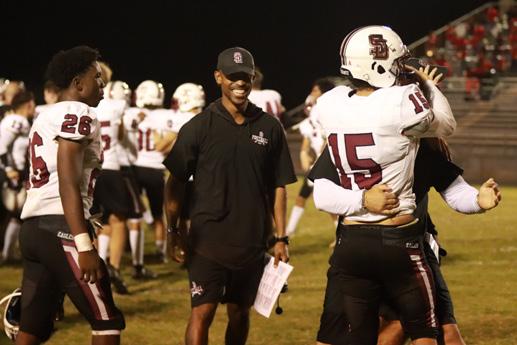

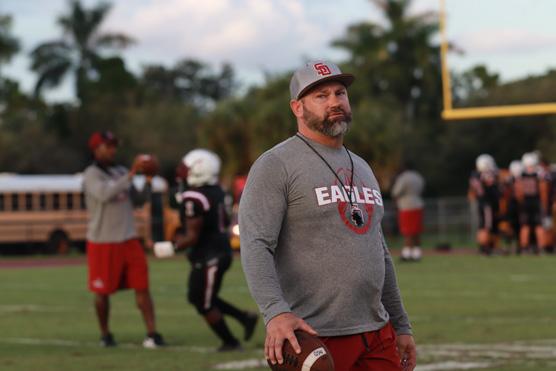
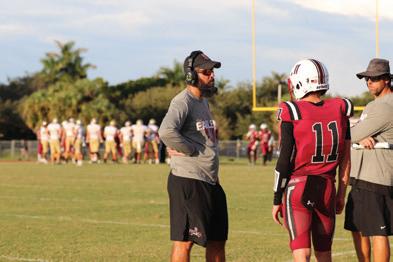






REAT
MSD varsity football team searches for coaches after five resign
Head Coach Quentin Short
SPORTS • Football Coaches Resign 30
Coach Travis Hernandez
Coaches Quentin Short, George LePorte, PJ Natke, Jerald Burley, Travis Hernandez and Warren Powers abruptly resigned from their positions on the Marjory Stoneman Douglas High School football program staff on Friday, Jan. 13. Short, who teaches weight training, and Leporte, who teaches chemistry, also resigned their teaching positions effective at the end of the school year.
The coaches met with Athletic Director Albert Guzzo beforehand to discuss their intention to resign and the process for doing so. The five coaches have accepted new positions at Piper High School, a rival of the MSD football team.
The Piper Bengals finished this season 5-4. After missing their district’s playoffs, they are seeking to improve by hiring an almost entirely new coaching staff. On the other hand, the Eagles are coming off a 7-3 season, where they made the playoffs and achieved victory in the first round.
Coming from a statistically better team, the MSD coaches left for personal reasons, rather than in search of a more productive program. With that said, the coaches will likely have an easier time building a roster to their liking at other schools because MSD’s ability to attract student athletes has tightened due to the school’s capacity issues.
In many public high schools, such as Piper, attracting transfer students for athletic purposes is a manageable process. Per Florida state statutes, student athletes are free to transfer to any high school in order to play on a sports team of their choice, as long as there is available space in the school. Currently, MSD accepts no student reassignments or transfers, as the school is at 116% capacity. Only students that move into the MSD boundary
can enroll at the school.

Schools like Piper, who have the availability for transfer students to register, can attract student athletes to a greater extent, building formidable sports teams. However, receiving transfer students from a school with extremely limited availability, like MSD, is much more difficult, thus
with new kids and build relationships with new people.”
Short, the varsity football team’s head coach, has had a prosperous career with the Eagles, starting with a record of 8-2 and a district championship victory during his first season in the 2014-2015 school year as an assistant coach. As a MSD coach for nine years, Short has built a loyal coaching staff that he plans to take with him in the next steps of his coaching career.

“When Coach Short gave me his resignation, he said he just needed a change of scenery–change of environment,” Guzzo said. “He’s been here for seven to eight years, and he wanted to explore other interests. Plus, he lives near [Piper High School], so the commute is probably 30 minutes less. That was his decision.”
In the aftermath of the coaches’ resignation, the MSD football program is searching for a new coach. Applications for the coaching job closed on Friday, Jan. 27.Guzzo and MSD staff planned to interview and select new coaches in the weeks to follow.
presenting a challenge to the ambitious coaching staff.
Nevertheless, the coaches have stated that their reasons for resigning include only personal matters and their desire for a change. Short and LePorte will finish out the 20022023 school year as MSD teachers, taking their new jobs at Piper in the 2023-2024 school year.
“I felt it was time to make a change, and so we decided to move on,” Short said. “[I] just felt like it was time to do something different. I’m excited because it’s a chance for me to coach in the community I live in, as I live a half mile from [Piper High School], and the opportunity to work

“It’s going to be hard,” cornerback Ryan Ebersberger (21) said. “We’ll have new play calls, new everything, but I think everything will be fine. I still think that we’ll be able to make the playoffs and win a playoff game.”
Looking towards the football program’s future, the Eagles seek to adjust to their new coaching staff as well as their returning players and coaches, including coaches Eric Zajkowski, Elliot Bonner and Christian Baldwin. While adjustments will need to be made as the team takes in a fresh set of coaches, the Eagles plan on being flexible and continuing their streak of winning records.
DESIGN BY Julia Landy
STORY BY Reece Gary and Ryan Shimony
PHOTOS BY Carolina Lozano Ochoa, Kate Becker and Fenthon Aristhomene
“
It’s going to be hard. We’ll have new play calls, new everything, but I think everything will be fine. I still think that we’ll be able to make the playoffs and win a playoff game.
cornerback
Ryan Ebersberger (21)
Coach Warren Powers
Coach George LePorte
SPORTS • Football Coaches Resign 31
Coach Jerald Burley

















 STORY BY Kate Becker
STORY BY Kate Becker






































 JAMAICA COLUMBIA
JAMAICA COLUMBIA









































































 STORY BY Grace Brill and Lily Singer
STORY BY Grace Brill and Lily Singer














